Exhibition “The Orange Corner” by Ojārs Pētersons
Before Vassiliy went back to Saint Petersburg, we talked about the exhibition by Ojārs Pētersons Oranžais stūris (The Orange Corner), which would be held at kim? in the middle of August, and Vassiliy was complaining about not being able to see it, while I went on about having to construct some kind of text based only on a few lines that Ojārs had sent, mentioning things like student summer internships, “a few photographs, some granite, sound” and “some similar stuff”, as well as two different meanings of the word “corner”. We did not have much of a conversation, for we thought that the concept of the exhibition is concealed in a silent irony of evasive phrases, while naming a few things leaves potentially infinite space for their topical visualization (which then is this very “visible” artwork), just like the mentioning of “corners” of Boyce, Flavin or even Tatlin would quite contrary draw too much of imagination to genuineness of history.
Having come home, I opened that page in the Philosophical Investigations that speaks about illustrations of a book – a rectangular parallelepiped drawn with lines – and its potential interpretations depending on its accompanying text. Here, for example: “In the accompanying text, something different is in question every time: here a glass cube, there an upturned open box, there a wire frame of that shape, there three boards forming a solid angle. Each time the text supplies the interpretation of the illustration.”
Here Wittgenstein is interested in what he calls “noticing an aspect”, and so he continues: “But we can also see the illustration now as one thing, now as another. – So we interpret it, and see it as we interpret it.”
By reading this passage again, I contemplate that the seeing as analysed in Philosophical Investigations – for instance, seeing something as salience you can run into or a corner you can get stuck in – could be generalised and attributed to the relationship between the visible or invisible part of the artwork and its very conception or interpretation. Yet a concept can be verbally tacit, unmanifested openly or only intuitively grasped, but interpretation can take place at a level of naive realism, which, similarly to Don Quixote, takes seriously some fantastic adventures of some kind of Amadis of Gaul described in knight novels.
So what is a viewer who is not cased in armour left to do? All but hope for materiality of an artwork and for orange colour protecting them from running into a sharp edge or from getting stuck in a corner, where misbehaved children used to be put on their knees on peas. This could be called the truth content of an artwork, although for me as an idealist “corner” and “edge” are just different notions in our heads.
/ from Jānis Taurens records inspired from conversation with Vasīlijs Voronovs/
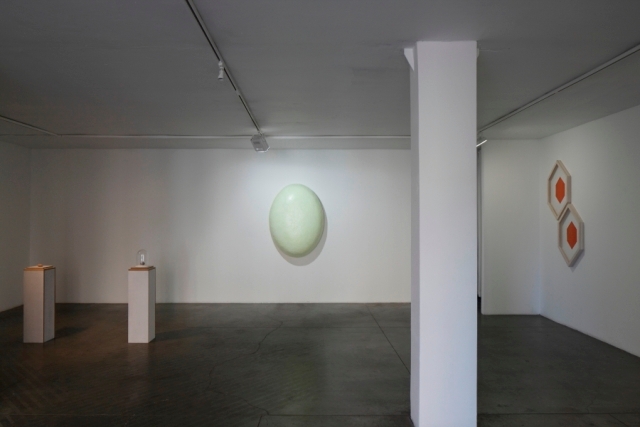
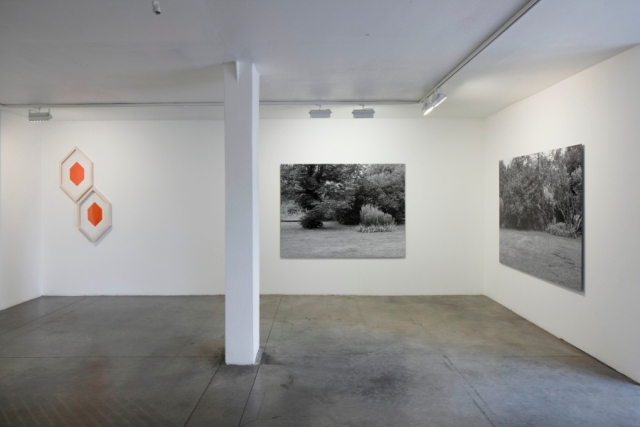
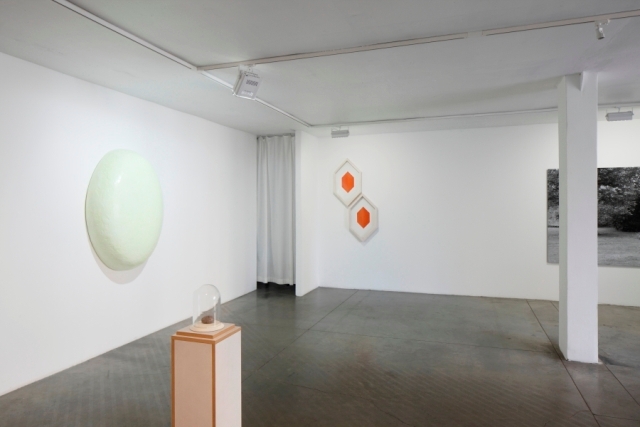
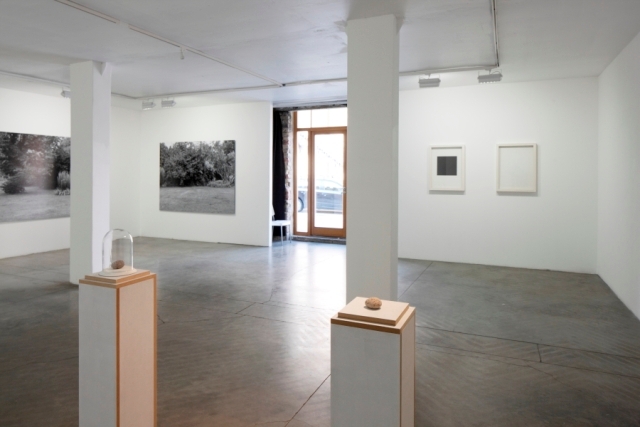
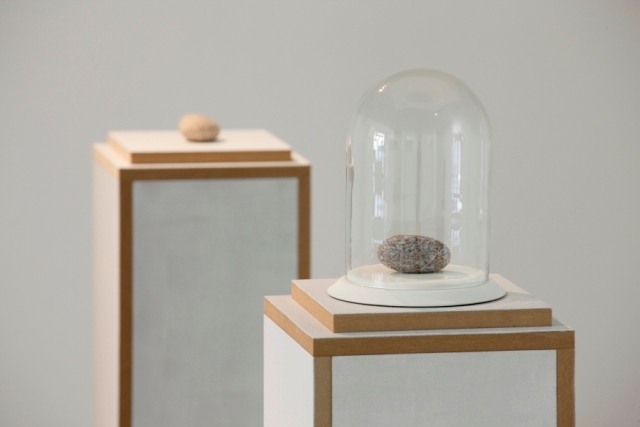
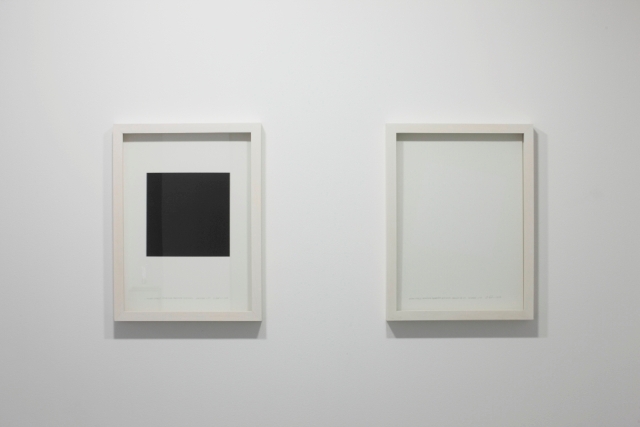
Exhibition “Cinq Á Sept” by Oļa Vasiļjeva
R: Would you like to have a dialogue about Ola’s work with me?
A: Yeah sure. Can’t say I totally get it though.
R: Whose work do you feel you get entirely?
A: Don’t know. Can’t say for sure. One common thing I notice amongst artists I like is that they have this ability to speak directly to me. It is hard to explain. Affect – that’s another thing. Ola has a definite affect, a specific gestalt.
R: If it affects you in a specific way would you be able to transmit that effect to me? What would convey it best?
A: A miasma of some sort.
Ola is a friend. A close one. I think of her as a storyteller. She will tell you of these fantastic dreams she had with exploding pills in her ear, or the fairytales of her childhood, those of the lives of stones in forests and exotic horses that sweat blood and tornados that hum. I find all of this very much a part of her practice. I told her this and she just smiled.
/excerpt from conversation with participation of Raimundas Malašauskas and Oļa Vasiļjeva.
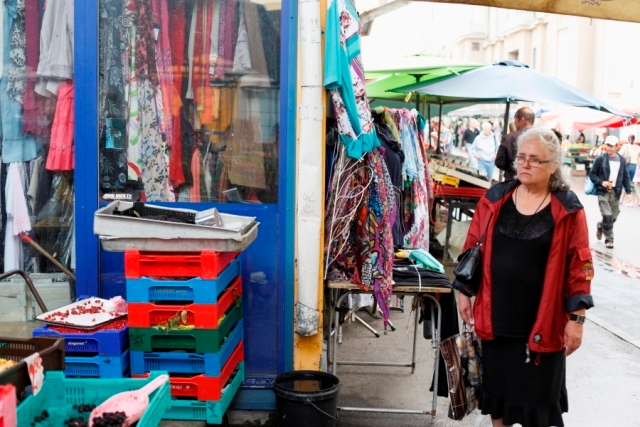
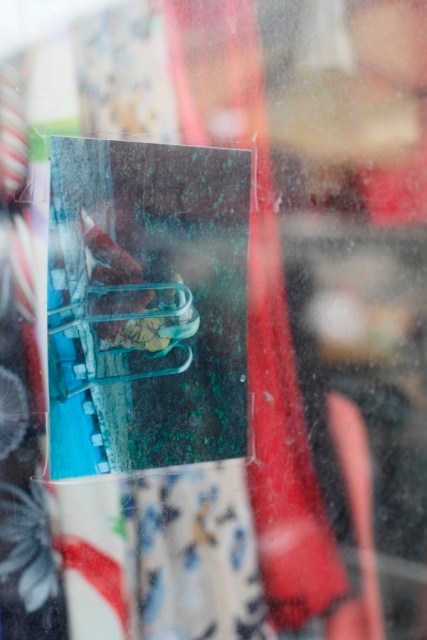
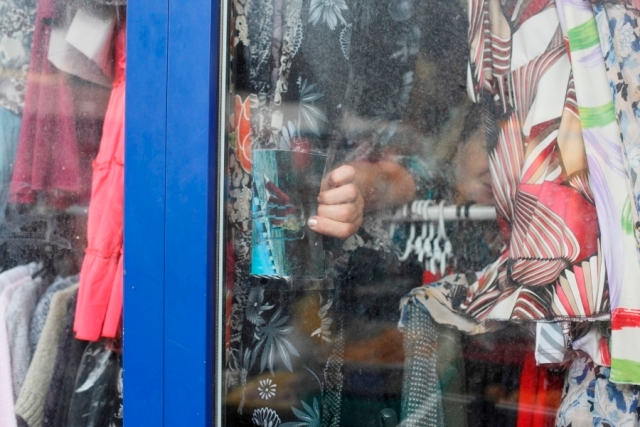
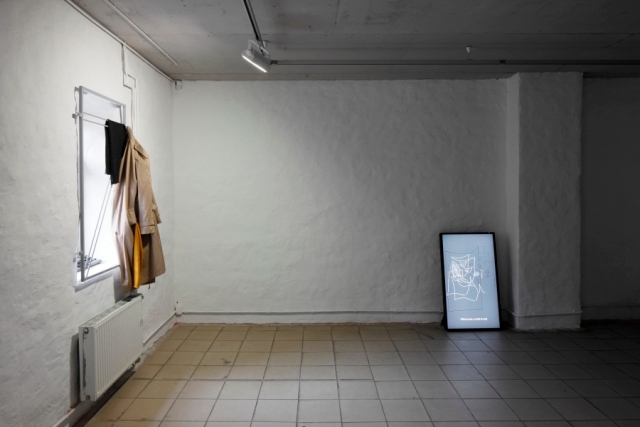
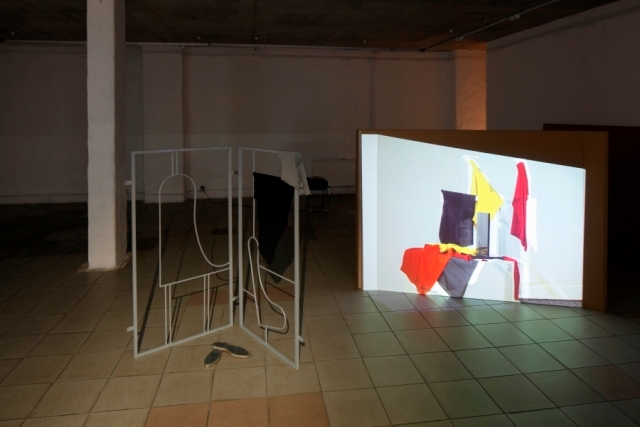
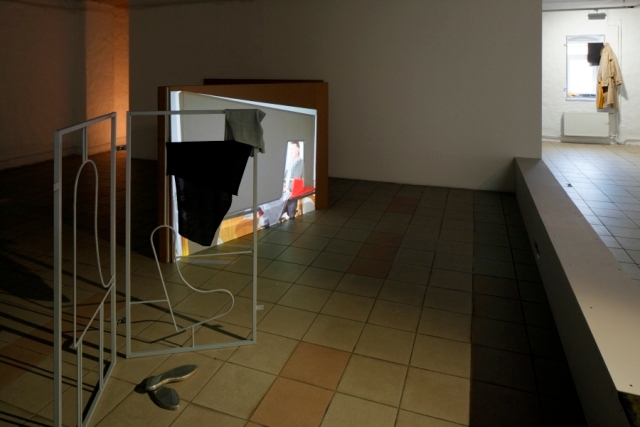
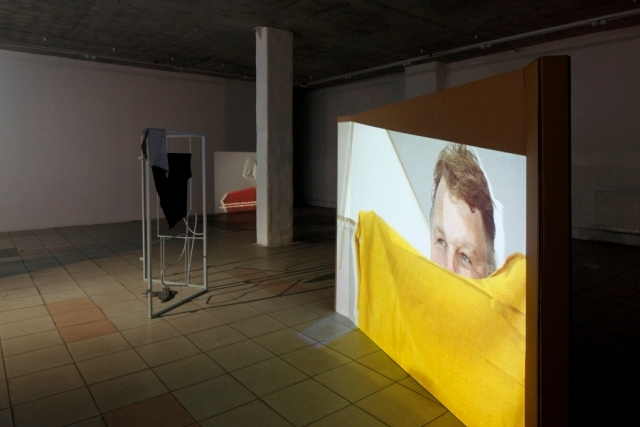
Solo-exhibition by Kristaps Epners
The exhibition is centred around a particular group of works – video recordings and images. Other works are also displayed. One of the recordings shows an artist running a marathon in city streets. In a different one the artist has documented his preparation period with a camera attached to his head. The images are screenshots from video materials. These are images of sceneries that the runner views during the trainings. The video material has undergone only the most necessary manipulations, avoiding editing or special framing and image processing. Therefore the materials are several hours of even days long. The viewer has a chance to connect to the artist-athlete’s experience through various episodes.
Marathon as a goal chosen by the athlete himself is in tune with the free choice of Kristaps Epners – the theme and form of his work. Subjecting creative expression to conditions of physical activity, raises questions tied to the economy, usefulness and purposefulness of an individual’s inner resources. They are also tied to gestures and presentation, for the physical exercise and effort that is needed for running a marathon does not allow the artwork model (the author) to look “more attractive”, to pose or to make unnecessary movements in front of the camera. It can be particularly well observed when approaching exhaustion.
Preparation for the long distance is not possible in a shorter period of time or in any other way than the recorded training. These functional video recordings, placed within a system of art coordinates, reveal quite a few image-forming and even symbolic elements.
This can best be seen in still images or image compositions, where the road is obviously at the centre. They remind of examples of classical art, the wings of which are constituted by different seasons, hours of the day, places and streets. The moments captured in these images reveal the concrete-unique experience – the fixing of the gaze upon elements within the scope of sight important for running, the speed of runner’s movement, some details that have accidentally made it on camera, own breath in cold weather, etc. Content-wise they emphasize the issue of personal will and choice. The runner, just like the artist, which is the same person in this case, has the option to withdraw himself at any time, acknowledge the superiority of circumstances or something else. The decision to pursue this tiring task is determined solely by his inner motivation.
/Vilnis Vējš, art critic/
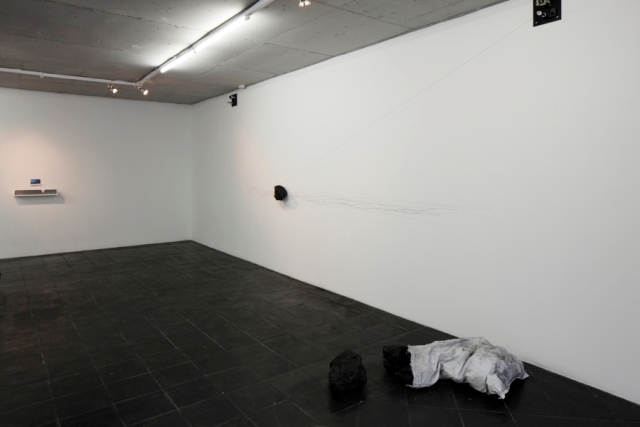
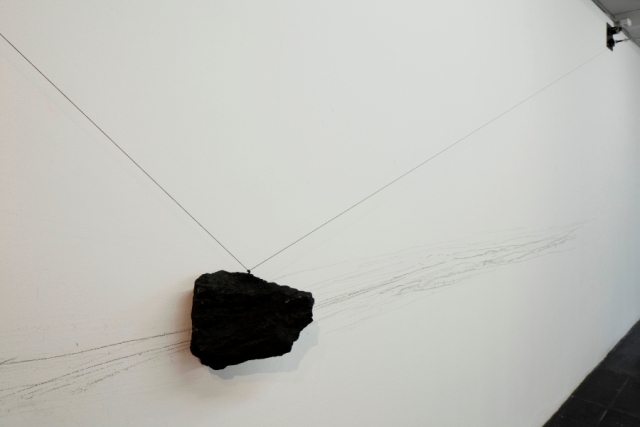
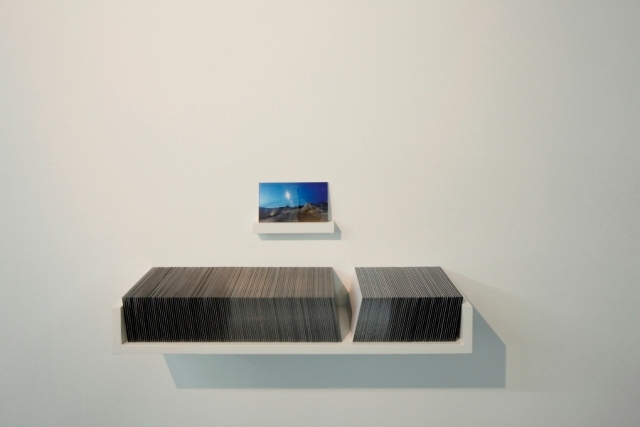
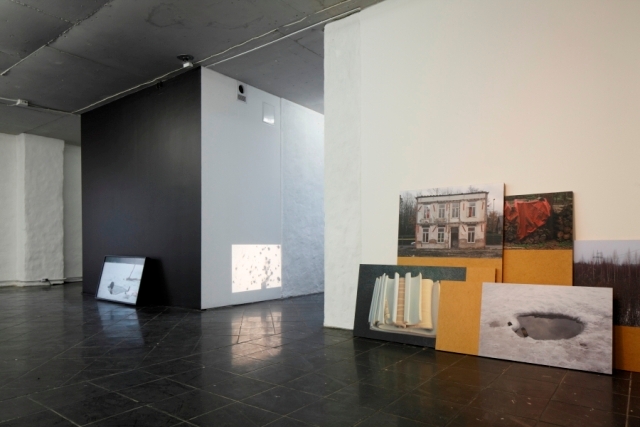
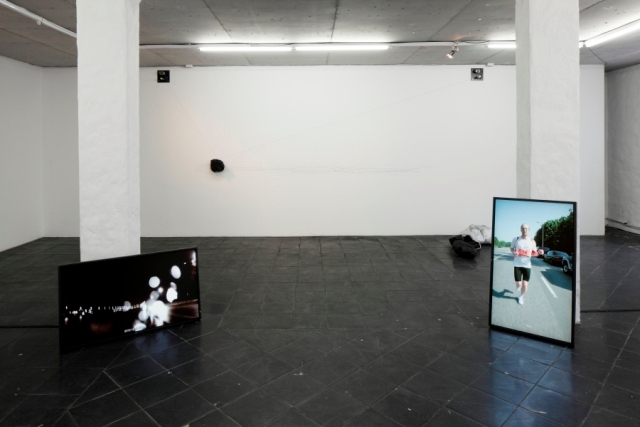
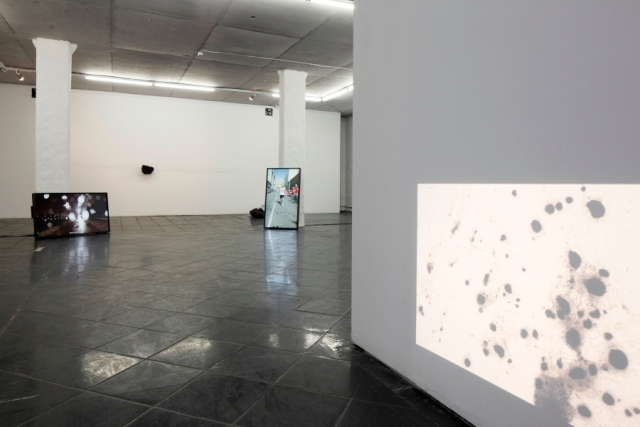
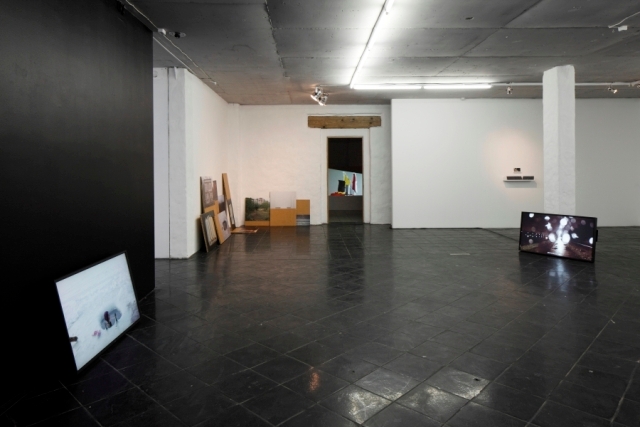
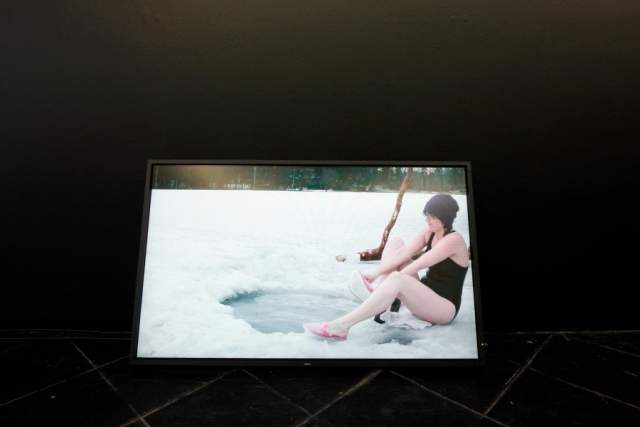
The exhibition will be open until September 29th in kim? Contemporary Art Centre, 12/1 Maskavas Street, Riga
Photographs by Ansis Starks
























